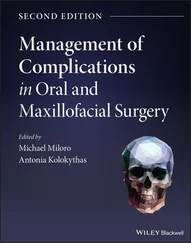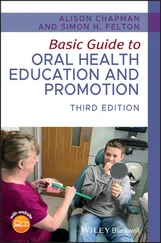66. Nosrat CA, Fried K, Lindskog S, Olson L. Cellular expression of neurotrophin mRNAs during tooth development. Cell Tissue Res 1997;290:569–580.
67. Nosrat CA, Fried K, Ebendal T, Olson L. NGF, BDNF, NT3, NT4, and GDNF in tooth development. Eur J Oral Sci 1998;106:94–99.
68. Christensen LR, Mollgard K, Kjaer I, Janas MS. Immunocytochemical demonstration of nerve growth factor receptor (NGF-R) in developing human fetal teeth. Anat Embryol 1993;188:247–255.
69. Zhang CZ, Li H, Young WG, Bartold PM, Chen C, Waters MJ. Evidence for a local action of growth hormone in embryonic tooth development in the rat. Growth Factors 1997;14: 131–143.
70. Joseph BK, Savage NW, Young WG, Waters MJ. Prenatal expression of growth hormone receptor/binding protein and insulin-like growth factor-I (IGF-I) in the enamel organ. Role for growth hormone and IGF-I in cellular differentiation during early tooth formation. Anat Embryol (Berl) 1994;189: 489–494.
71. Tabata MJ, Kim K, Liu JG, Yamashita K, Matsumura T, Kato J, Iwamoto M, Wakisaka S, Matsumoto K, Nakamura T, Kumegawa M, Kurisu K. Hepatocyte growth factor is involved in the morphogenesis of tooth germ in murine molars. Development 1996;122:1243–1251.
72. Moiseiwitsch JRD, Lauder JM. Stimulation of murine tooth development in organotypic culture by the neurotransmitter serotonin. Arch Oral Biol 1996;41:161–165.
73. Slavkin HC. Molecular biology of dental development: A review. In: Davidovitch Z (ed). The Biology of Tooth Eruption and Root Resorption. Birmingham, AL: EMBCO Media, 1988:107–116.
74. Ooe T. Human tooth and dental arch development. Tokyo: Ishiyaku, 1981.
75. Harada H, Kettunen P, Jung H-S, Mustonen T, Wang YA, Thesleff I. Localization of putative stem cells in dental epithelium and their association with Notch and FGF signaling. J Cell Biol 1999;147:105–120.
76. Mitsiadis TA, Henrique D, Thesleff I, Lendahl U. Mouse serrate-1 (jagged-1): Expression in the developing tooth is regulated by epithelial-mesenchymal interactions and fibroblast growth factor-4. Development 1997;124:1473–1483.
77. Bretscher MS. Getting membrane flow and the cytoskeleton to cooperate in moving cells. Cell 1996;87:601–606.
78. Mitchison TJ, Cramer LP. Actin-based cell motility and cell locomotion. Cell 1996;84:371–379.
79. Haemmerli G. Principles of cell motility and their morphologic manifestations. Exp Biol Med 1985;10:89–117.
80. Abercrombie M, Heaysman JEM, Pegrum SM. The locomotion of fibroblasts in culture. IV. Electron microscopy of the leading lamella. Exp Cell Res 1971;67:359–367.
81. Couchman JR, Rees DA. The behavior of fibroblasts migrating from chick heart explants: Changes in adhesion, locomotion and growth, and in the distribution of actomyosin and fibronectin. J Cell Sci 2002;39:149–165.
82. Izzard CS, Izzard SL, DePasquale JA. Molecular basis of cell-substrate adhesions. Exp Biol Med 1985;10:1–22.
83. Turner CE, Burridge K. Transmembrane molecular assemblies in cell-extracellular matrix interactions. Curr Opin Cell Biol 1991;3:849–853.
84. Brown MJ, Loew LM. Graded fibronectin receptor aggregation in migrating cells. Cell Motil Cytoskeleton 1996;34: 185–193.
85. Duband JL, Nuckolls GH, Ishihara A, Hasegawa T, Yamada KM, Thiery JP, Jacobson K. Fibronectin receptor exhibits high lateral mobility in embryonic locomoting cells but is immobile in focal contacts and fibrillar streaks in stationary cells. J Cell Biol 1988;107:1385–1396.
86. Couchman JR, Blencowe S. Adhesion and cell surface relationships during fibroblast and epithelial migration in vitro. Exp Biol Med 1985;10:23–38.
87. Schor SL, Ellis I, Dolman C, Banyard J, Humphries MJ, Mosher DF, Grey AM, Mould AP, Sottile J, Schor AM. Substratum-dependent stimulation of fibroblast migration by the gelatin-binding domain of fibronectin. J Cell Sci 1996;109: 2581–2590.
88. Hay ED. Interaction of migrating embryonic cells with extracellular matrix. Exp Biol Med 1985;10:174–193.
89. Bernanke DH, Markwald RR. Migratory behavior of cardiac cushion tissue cells in a collagen-lattice culture system. Dev Biol 1982;91:235–245.
90. Harris AK, Stopack D, Wild P. Fibroblast traction as a mechanism for collagen morphogenesis. Nature 1981;290:249–251.
91. Arnaout MA. Cell adhesion molecules. In: Kelley WN, Harris ED, Ruddy S, Sledge CB (eds). Textbook of Rheumatology, ed 4. Philadelphia: Saunders, 1993:213–226.
92. Obara N, Takeda M. Expression of the neural cell adhesion molecule (NCAM) during second- and third-molar development in the mouse. Anat Embryol 1993;188:13–20.
93. Gumbiner BM. Cell adhesion: The molecular basis of tissue architecture and morphogenesis. Cell 1996;84:345–357.
94. Hynes RO. Integrins: Versatility, modulation, and signalling in cell adhesion. Cell 1992;69:11–25.
95. Salmivirta K, Gullberg D, Hirsch E, Altruda F, Ekblom P. Integrin subunit expression associated with epithelial-mesenchymal interactions during murine tooth development. Dev Dyn 1996;205:104–113.
96. Bai XM, Van der Schueren B, Cassiman J-J, Van den Berghe H, David G. Differential expression of multiple cell-surface heparan sulfate proteoglycans during embryonic tooth development. J Histochem Cytochem 1994;42:1043–1054.
97. Hynes RO, Yamada KM. Fibronectins: Multifunctional modular glycoproteins. J Cell Biol 1982;95:369–377.
98. Yamada KM, Hayashi M, Hirano H, Akiyama SK. Fibronectin and cell surface interactions. In: Trelstad RL (ed). The Role of Extracellular Matrix in Development. New York: Liss, 1984: 89–121.
99. Garbarsch C, Matthiessen ME, Olsen BE, Moe D, Kirkeby S. Immunohistochemistry of the intercellular matrix components and the epithelio-mesenchymal junction of the human tooth germ. Histochem J 1994;26:110–118.
100. Nagai N, Yamachika E, Nishijima K, Inoue M, Shin HI, Suh MS, Nagatsuka H. Immunohistochemical demonstration of tenascin and fibronectin in odontogenic tumours and human fetal tooth germs. Eur J Cancer B Oral Oncol 1994;30B: 191–195.
101. Sawada T. Expression of basement membrane components in the dental papilla mesenchyme of monkey tooth germs— An immunohistochemical study. Connect Tissue Res 1995; 32:55–61.
102. Timpl R, Brown JC. The laminins. Matrix Biol 1994;14: 275–281.
103. Salmivirta K, Sorokin LM, Ekblom P. Differential expression of laminin α chains during murine tooth development. Dev Dyn 1997;210:206–215.
104. Yoshiba K, Yoshiba N, Aberdam D, Meneguzzi G, Perrin-Schmitt F, Stoetzel C, et al. Expression and localization of laminin-5 subunits during mouse tooth development. Dev Dyn 1998;211:164–176.
105. Tucker RP, Moiseiwitsch JRD, Lauder JM. In situ localization of tenascin mRNA in developing mouse teeth. Arch Oral Biol 1993;38:1025–1029.
106. Paulsson M. Basement membrane proteins: Structure, assembly, and cellular interactions. Crit Rev Biochem Mol Biol 1992;27:93–127.
107. Timpl R, Dziadek M, Fujiwara S, Nowack H, Wick G. Nidogen: A new, self-aggregating basement membrane protein. Eur J Biochem 1983;137:455–465.
108. Dziadek M. Role of laminin-nidogen complexes in basement membrane formation during embryonic development. Experientia 1995;51:901–913.
109. Meyer J-M, Ruch JV, Kubler MD, Kupferle C, Lesot H. Cultured incisors display major modifications in basal lamina deposition without further effect on odontoblast differentiation. Cell Tissue Res 1995;279:135–147.
110. Kitamura H. Embryology of the Mouth and Related Structures. Tokyo: Maruzen, 1989:12–34.

Dentin
Dentin is deposited by odontoblasts that develop ectomesenchymal cells of the dental papilla on contact with the basal lamina formed by the inner enamel epithelium.
Читать дальше













